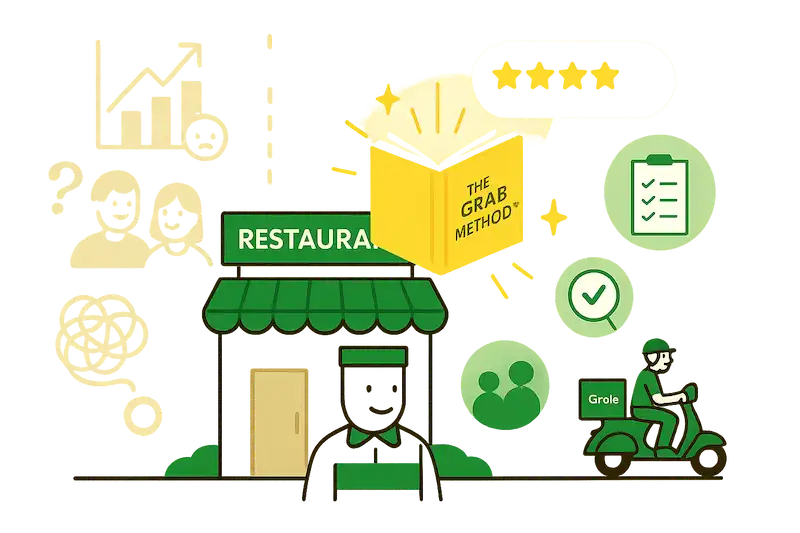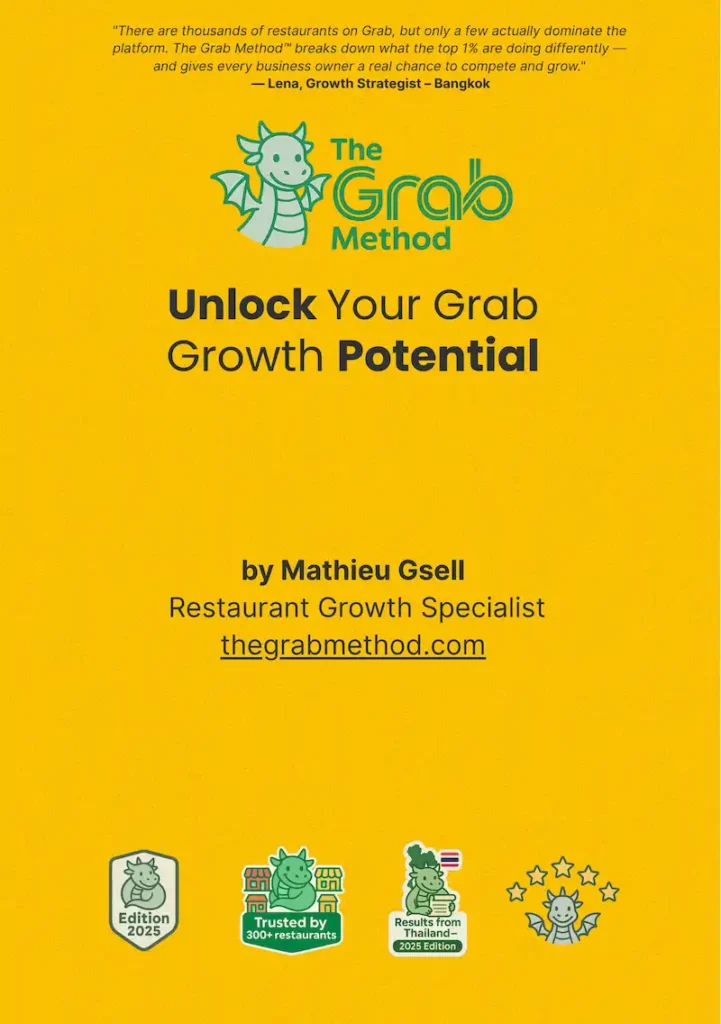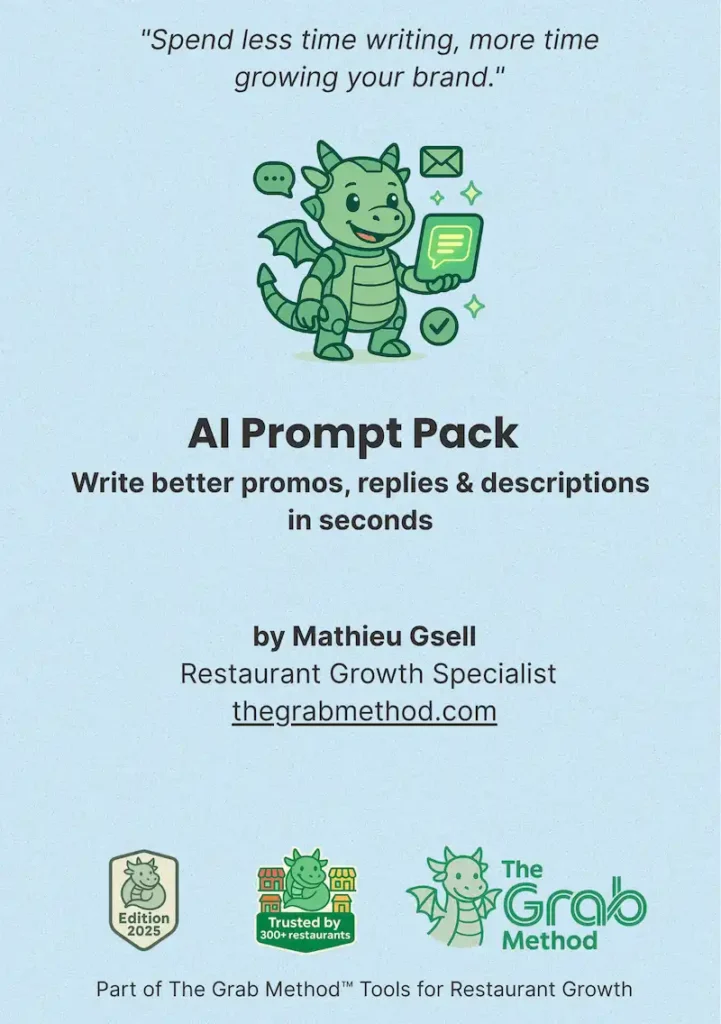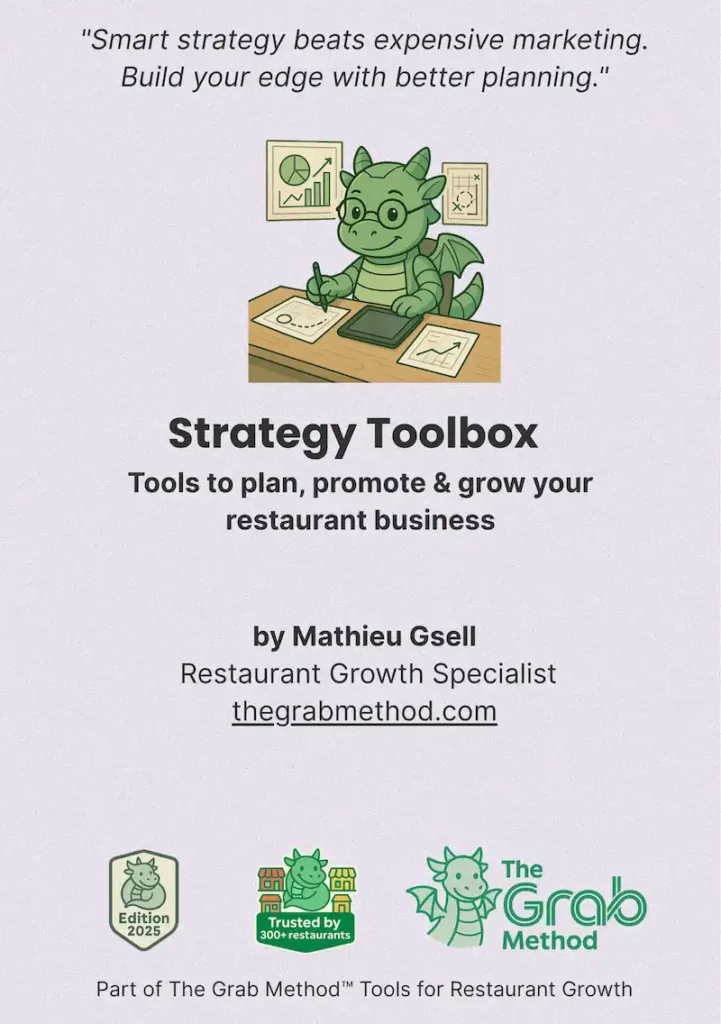📩 hello@thegrabmethod.com
🌐 thegrabmethod.com
Are you a restaurant owner in Thailand or Singapore feeling like GrabFood’s fees are eating into your profits? You’re not alone. Many restaurant owners initially see Grab’s commission charges as an expensive cost, but the truth is that with the right strategy, Grab can still be highly profitable for your business. Understanding how these commission fees work – and learning to work around them – is key to turning the platform into a revenue driver instead of a burden.
In this article, we’ll demystify Grab’s commission structure and show you how to:
GrabFood primarily makes money by taking a percentage commission from each order you receive through the app. However, that’s not the only fee at play. Let’s break down the key costs involved in a GrabFood order for restaurants:
In summary, the main cost to you as a merchant is the commission percentage that Grab takes from your food orders. The delivery fee and any small platform fees are either covered by the customer or by Grab to pay its drivers. Now, let’s see how that commission actually impacts your earnings with some numbers.
Grab’s commission might sound manageable as a percentage, but it’s important to see how it cuts into each order’s revenue. Here are a couple of examples to illustrate the impact on an average order:
Now, consider your profit margins. If your food cost and overhead for that ฿150 Thai order are, say, ฿100, then without Grab you’d profit ฿50. With Grab taking ฿45, you’re left with just ฿5 profit — essentially wiping out the margin. This is why many restaurant owners feel the pinch of Grab’s commission.
Does that mean selling on Grab is a loss? Not if you plan for it. Remember that GrabFood can bring you a lot of new customers and extra orders you might not get otherwise. The key is to build those fees into your strategy. In the next sections, we’ll look at how you can adjust your prices and operations so that you maintain healthy profits on each Grab order.
The most straightforward way to handle Grab’s commission is to slightly increase your menu prices on the app. In fact, if you browse GrabFood, you’ll notice many restaurants price items higher than they do in-store. Here’s how you can adapt your pricing strategy:
When adjusting prices, be transparent if possible. Some restaurants mention on their social media that prices on delivery apps are a bit higher to account for fees. Many customers understand this trade-off as the cost of convenience. The goal is to strike a balance where your menu remains competitive on Grab while factoring in the commission. By smartly increasing prices and curating your offerings, you ensure that every order through GrabFood is still putting money in your pocket.
Another strategy to counteract commissions is to earn more per order. If you can get customers to spend more on each order, the percentage Grab takes has less impact on your bottom line. Here are some techniques to boost your Average Order Value on Grab:
Increasing AOV works hand-in-hand with pricing adjustments. For example, say your typical order is around S$15. If you manage to raise that to S$25 by using the techniques above, a 30% commission takes S$7.50 instead of S$4.50 – yes, Grab takes more in absolute terms, but your revenue is higher too (S$17.50 instead of S$10.50 net to you). In practice, your food cost for a S$25 order is higher, but not double, so you come out ahead with a larger order.
The takeaway: get customers to put more in their cart. Bigger orders mean you’re delivering more value (and food) in one go, and you retain more money per delivery after the fee. With strategic upselling and promotions, you can significantly blunt the effect of Grab’s commission on your profits.
One question ambitious restaurant owners often ask is whether Grab’s commission rate is set in stone. The reality is that for small independent restaurants, the standard commission is usually non-negotiable. However, there are cases – typically for high-performing or chain restaurants – where some negotiation might be possible. Here’s what to know:
Be realistic: Negotiating is not guaranteed, and many smaller eateries won’t have success changing the fee. Grab’s policies vary by country and situation. It often takes significant volume or influence to get an exception. That said, it doesn’t hurt to politely inquire with Grab’s merchant support or your account representative, especially if you feel your business merits special consideration.
Another tip: Keep an eye out for special programs. Sometimes Grab launches campaigns to support restaurants (for example, during certain periods they offered 0% commission on self-pickup orders:contentReference[oaicite:6]{index=6} or reduced rates for new sign-ups). Taking advantage of these programs when they’re available can save you a lot on fees. Encouraging customers to use Grab’s self-pickup option is a win-win — the customer saves on delivery, and you often pay no commission on those orders!
In short, while the commission rate is a given for most, you do have some control and options. By excelling on the platform (high ratings, strong sales) and maintaining a good relationship with Grab, you position yourself as a valuable partner. And if the opportunity arises to negotiate or join a special low-commission program, you’ll be ready to make the most of it.
Dealing with fees and optimizing your Grab presence can be tricky. But you don’t have to navigate it alone. The Grab Method™ team specializes in helping restaurants succeed on Grab.
Contact us: hello@thegrabmethod.com
Learn more: thegrabmethod.com
Don’t let Grab’s commissions scare you away from growth. With the right approach, you can turn GrabFood into a thriving, profitable channel for your restaurant!




รับ The Grab Method™ ตอนนี้ และเริ่มขยายธุรกิจได้ทันที